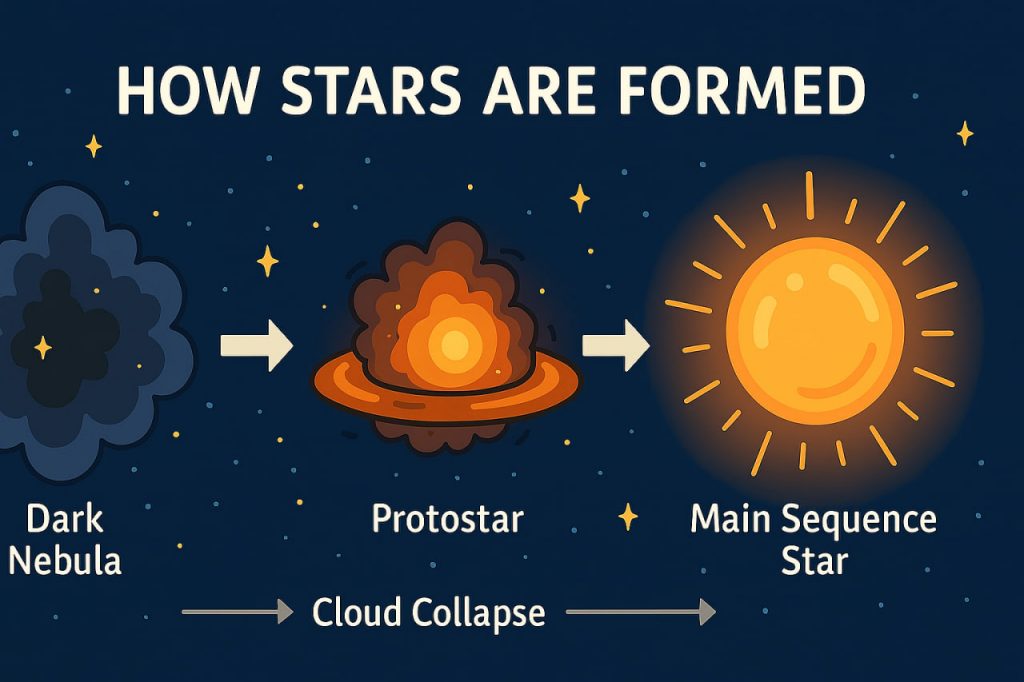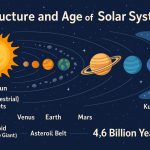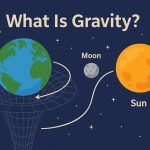Stars are massive spheres of glowing gas that shine with energy produced by nuclear fusion. Every star—including our Sun—was born from cosmic clouds in deep space. The process of star formation is both violent and beautiful, involving gravity, gas, dust, and intense pressure over millions of years.
Where Stars Begin: Giant Molecular Clouds
Star formation begins in regions of space known as giant molecular clouds, also called stellar nurseries. These clouds are:
- Cold and dense
- Made mostly of hydrogen gas
- Hundreds of times more massive than our Sun
Some well-known star-forming regions include the Orion Nebula and Eagle Nebula.
Step-by-Step Process of Star Formation
1. Cloud Collapse
A shockwave—often from a nearby supernova—can trigger a part of the cloud to collapse under its own gravity. As this region contracts, it heats up and begins to spin.
2. Protostar Formation
As the gas and dust fall inward, a protostar forms at the center. This is a very young star that has not yet started nuclear fusion. It’s surrounded by a spinning disk of gas and dust.
3. Ignition of Nuclear Fusion
When the core of the protostar becomes hot and dense enough (around 10 million °C), hydrogen atoms begin to fuse into helium. This process releases huge amounts of energy. The star begins to shine—this marks the birth of a true star.
4. Main Sequence Star
Now in a stable phase, the star enters the main sequence, where it will spend most of its life (like our Sun). The inward pull of gravity is balanced by the outward pressure of fusion.
Different Sizes, Different Outcomes
- Small stars (like red dwarfs) form slowly and burn fuel very efficiently—they can live for trillions of years.
- Medium stars (like the Sun) live for billions of years before expanding into red giants and ending as white dwarfs.
- Massive stars burn brighter and faster—lasting only millions of years—and end in dramatic supernova explosions that may leave behind neutron stars or black holes.
What Remains: Planetary Systems
The leftover dust and gas in the spinning disk around the young star can form:
- Planets
- Moons
- Asteroids
- Comets
This is how solar systems like ours are born.
Summary
Star formation is a cosmic dance of gravity, heat, and nuclear fusion. From quiet clouds of hydrogen to brilliant shining stars, it’s a journey that spans millions of years and leads to the creation of solar systems and, ultimately, the possibility of life.
Glossary
- Molecular Cloud: A cold, dense region of gas and dust where stars are born
- Protostar: An early-stage forming star not yet undergoing fusion
- Nuclear Fusion: The process of combining hydrogen atoms to form helium, releasing energy
- Main Sequence: The stable life stage of a star
- Supernova: A powerful explosion marking the death of a massive star


